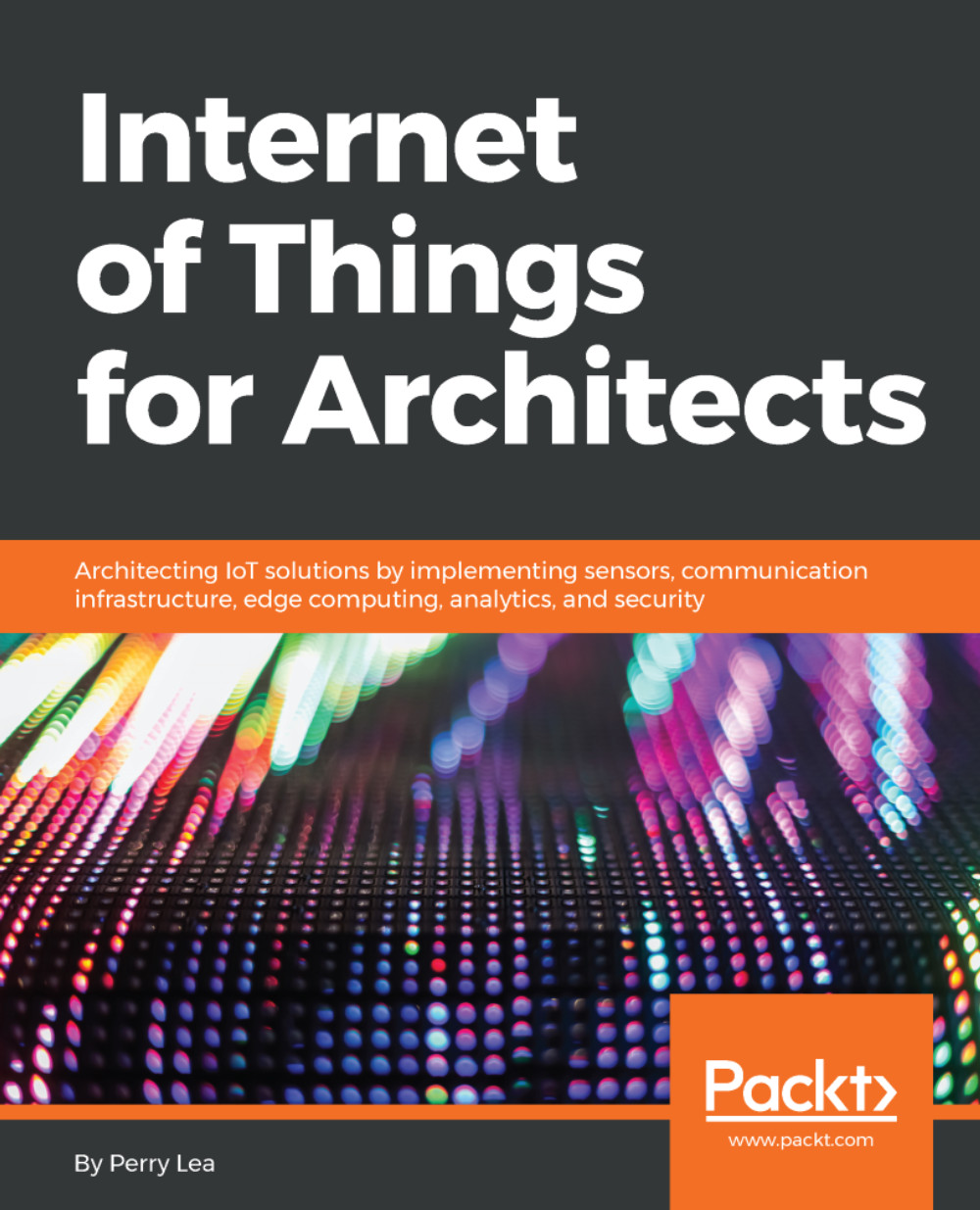Summary
This chapter summarized several different sensors and endpoints used in IoT deployments. The IoT isn't about simply connecting a device to the internet. While that is a key component, the essence of IoT is connecting the analog world to the digital. Essentially, things and devices previously unconnected now have the opportunity to collect information and communicate it to other devices. This is powerful because data that had never been captured now has value. The ability to sense the environment will lead to more efficiencies, revenue streams, and value for customers. Sensing allows for smart cities, predictive maintenance, tracking assets, and analyzing the hidden meaning in massive aggregates of data. Powering such systems is also critical, and must be understood by architects. A poorly designed system can lead to too short a battery life, which will end in substantial costs to remediate.
The next chapter will bridge the endpoints to the internet through non-IP communication....




































































